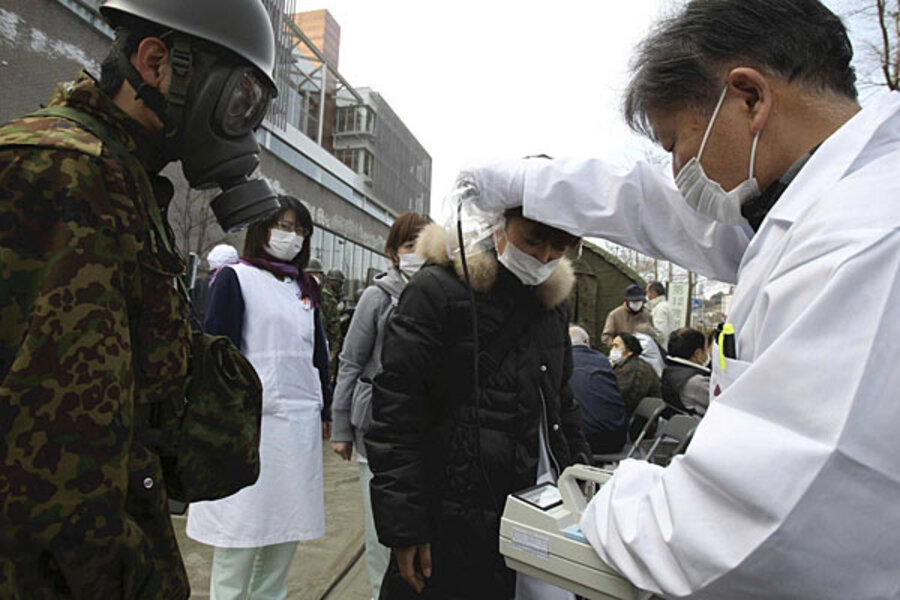Japan earthquake: Authorities race to avert nuclear crisis at second reactor
Loading...
| Tokyo
A frantic effort is under way in Japan to avert a nuclear crisis after officials warned on Sunday that hydrogen inside a second reactor at an atomic power plant damaged by Friday's 8.9 earthquake was at risk of exploding.
Tokyo Electric Power Co. (TEPCO) confirmed that the Fukushima Daiichi power plant's No. 3 reactor had lost its cooling functions, possibly leading to a partial meltdown similar to the one yesterday at the plant's No. 1 reactor.
The Saturday explosion at the No. 1 reactor blew the roof of of its outer building, releasing small amounts of radiation into the air. Authorities said that a similar fate could await the plant's No. 3 reactor today. But they have been quick to stress that the levels of radiation released are not dangerous to people.
The government’s top spokesman, Yukio Edano, said Sunday that radioactivity levels near the Daiichi plant and the nearby Fukushima Daini plant, where three more cooling systems for reactors have failed, posed no threat to human health.
Still, he could not rule out the possibility of a second explosion. "At the risk of raising further public concern, we cannot rule out the possibility of an explosion," Mr. Edano said. "If there is an explosion, however, there would be no significant impact on human health."
Nuclear emergency
TEPCO described the situation at the plant as an emergency, while the accident was placed at level four on an international scale of zero to seven. The firm said the No. 1 reactor had partially melted – the first time this has happened in Japan – adding that it was continuing efforts to cool the reactor.
The No. 3 reactor at the plant, 150 miles north of Tokyo, is one of six reactors to have experienced cooling problems.
Officials in Tokyo said they had started filling the No. 3 reactor’s casing with water and boric acid in an attempt to prevent it from reaching critical stages. They took similar measures with the No. 1 reactor at the same plant on Saturday.
Screening centers were being set up on Sunday for people worried about exposure. Around 140,000 people had left the area, while authorities prepared to distribute iodine to protect people from radioactive exposure.
At least 22 people are known to have been exposed to radiation and were being treated in hospital, but Japan’s nuclear and industrial safety agency said that as many as 160 people may have been exposed.
Radiation exceeds the legal limit
TEPCO said radioation levels at the plant had exceeded the legal limit on Sunday morning. Hourly radiation at the site was measured at 882 micro sievert, in excess of the allowable level of 500, Japan’s nuclear safety agency said. Edano said the level had briefly risen 1,204 micro sievert.
“There was no sudden rise in radiation because of the ventilation activities,” Edano said. "We are doing the two things at the same time - venting air out of the reactor and supplying water into the reactors”
As authorities released steam to relieve pressure from the second overheating reactor, efforts were under way to evacuate 210,000 people living within 20 kilometers of the two plants.
Edano said: “There is no confusion at this point, although we appreciate that people will have to leave their homes and livelihoods behind, but there is no panic.”
The latest emergency drew an angry response from anti-nuclear campaigners in Japan.
"A nuclear disaster that the supporters of nuclear power in Japan said wouldn't happen, is in progress," the Citizens' Nuclear Information Center said. "It is occurring as a result of an earthquake that they said would never happen."





